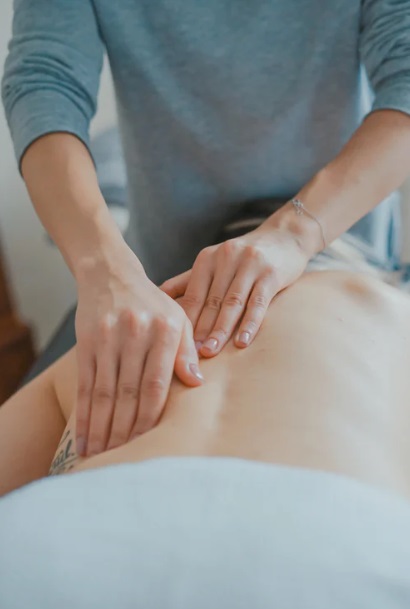
How back pain myths make the road to recovery longer
At this very moment, 1 in 6 people on the Lower North Shore is suffering from back pain of some description.[1] Back pain affects your work, sports, mental health, sleep and is a leading cause of disability worldwide.[2]
How disabling back pain is to a person is actually more closely linked to their back pain beliefs, fear of physical activity and behaviours than the actual intensity of their pain.[3]
Unfortunately there are also many myths and un-truths surrounding back pain and these can actually make it more difficult to recover fully from your back pain and avoid recurrences in the future.
How back pain myths perpetuate the pain
There is evidence that the beliefs and attitudes of people suffering back pain can directly influence the success of treatment and pain management programs.[4] Unhelpful beliefs about back pain are associated with higher levels of pain, disability, work absenteeism and medication use.[5]
Unhelpful beliefs often lead to unhelpful behaviours – making the road to recovery longer and more painful. Behaviours such as avoiding normal spine postures (slouching while sitting) and meaningful activities (lifting, physical activity, activities of daily living and work) often lead to unhelpful protective behaviours such as muscle guarding, bracing core muscles and slow and cautious movement.[6]
5 unhelpful back pain beliefs
Back pain myth 1: Now that I have back pain it will be recurring and deteriorate as I get older
Myth Busted – Even though lower back pain and back pain can be very painful quickly, with treatment from a great physio, pain can be reduced within a few weeks to months for most people.[7] Only a very small number of people develop long term or disabling problems when musculoskeletal therapy is sought early.[8]
Back pain myth 2: Scans are always needed to detect the cause of back pain
Myth Busted – Huge amounts of money are spent every year on X-rays, CT and MRI scans that benefit the prognosis and recovery of a very small number of people.[9] Scans can’t always determine the prognosis of back pain, the likelihood of future disability, or improve back pain clinical outcomes.
Back pain myth 3: Back pain is caused by a weak core
Myth Busted – Being weak in your core muscles alone isn’t the cause of your back pain. Recent studies have shown that there is no supporting evidence that those with back pain have weak core muscles. Most likely is that any muscle deficit or atrophy is actually the result of back pain rather than the cause.[10] Learning to relax your core muscles during everyday tasks can actually be helpful, because being tense, or tensing your muscles for long periods of time is counterproductive.
Back pain myth 4: Repeated spinal loading and bending can wear out the back
Myth Busted – In the same way that lifting weights properly in the gym makes muscles stronger, moving correctly and loading the back with reasonable weight can make your back stronger and healthier. Don’t be afraid of participating in activities with running, twisting, lifting or bending, as long as you start slowly and practice regularly.
Back pain myth 5: If I have back pain I should stay in bed and rest
Myth busted – Avoiding aggravating activities for a few days after your initial injury should help to relieve pain. But, there is strong evidence that prolonged bed rest is unhelpful and is actually associated with higher levels of pain that last longer, greater disability and poorer recovery times. [11] Keeping active and returning your normal work, sport and hobby activities has been shown to aid recovery in the long run.[12]
If you are suffering from back pain on the Lower North Shore and avoid seeing a physio, you are increasing your chances of your back pain persisting longer and a recurrence of the injury in the future. Don’t wait until the pain becomes severe or chronic, give Lane Cove Physio a call on (02) 9428 5772 or email us to book at [email protected].
[1] https://www.aihw.gov.au/reports/chronic-musculoskeletal-conditions/back-problems/contents/what-are-back-problems
[2] Foster NE, Anema JR, Cherkin D, et al. Prevention and treatment of low back pain: evidence, challenges, and promising directions. The Lancet 2018;391:2368–83.
[3] Urquhart DM, Bell RJ, Cicuttini FM, Cui J, Forbes A, Davis SR. Negative beliefs about low back pain are associated with high pain intensity and high level disability in community-based women. BMC Musculoskelet Disord. 2008;9:148.
[4] Briggs AM, Jordan JE, Buchbinder R, Burnett AF, O’Sullivan PB, Chua JYY, Osborne RH, Straker LM. Health literacy and beliefs among a community cohort with and without chronic low back pain. Pain. 2010;150:275-83.
[5] Main CJ, Foster N, Buchbinder R. How important are back pain beliefs and expectations for satisfactory recovery from back pain? Best Pract Res Clin Rheumatol 2010;24:205–17.
[6] O’Sullivan PB, Caneiro JP, O’Keeffe M, et al. Cognitive functional therapy: an integrated behavioral approach for the targeted management of disabling low back pain. Phys Ther 2018;98:408–23
[7] Grotle M, Brox JI, Glomsrød B, Lønn JH, Vøllestad NK. Prognostic factors in first-time care seekers due to acute low back pain. Eur J Pain. 2007;11:290-8.
[8] Lehmann TR, Spratt KF, Lehmann KK. Predicting long-term disability in low back injured workers presenting to a spine consultant. Spine. 1993;18:1103.
[9] Chou R, Qaseem A, Owens DK, Shekelle P. Diagnostic Imaging for Low Back Pain: Advice for High-Value Health Care From the American College of Physicians. Ann Int Med. 2011;154:181.
[10] Wirth, Klaus, Hagen Hartmann, Christoph Mickel, Elena Szilvas, Michael Keiner, and Andre Sander. “Core stability in athletes: a critical analysis of current guidelines.” Sports medicine47, no. 3 (2017): 401-414
[11] Hagen K, Hilde G, Jamtvedt G, Winnem M. Bed rest for acute low-back pain and sciatica. Cochrane Database Syst Rev. 2009;
[12] Maher C, Latimer J, Refshauge K. Prescription of activity for low back pain: what works? Aust J Physiother. 1999;45:121-32.



